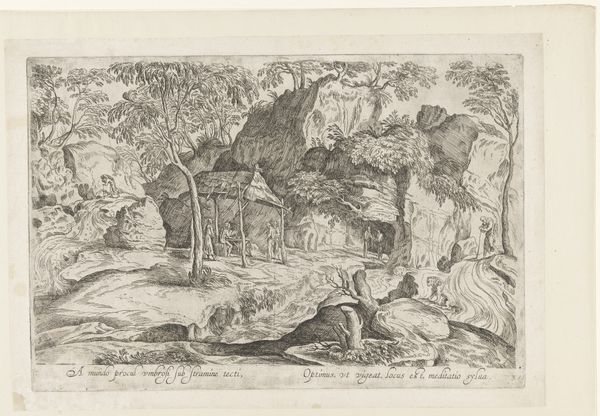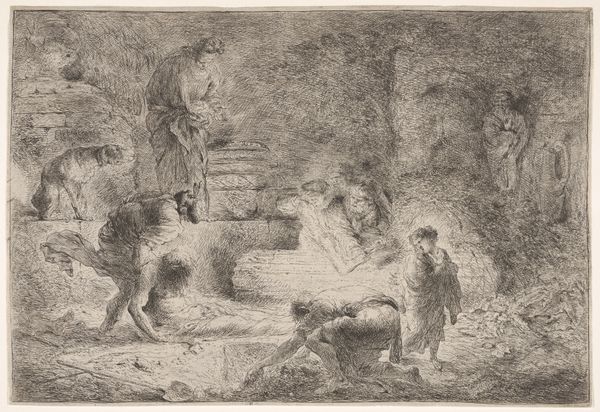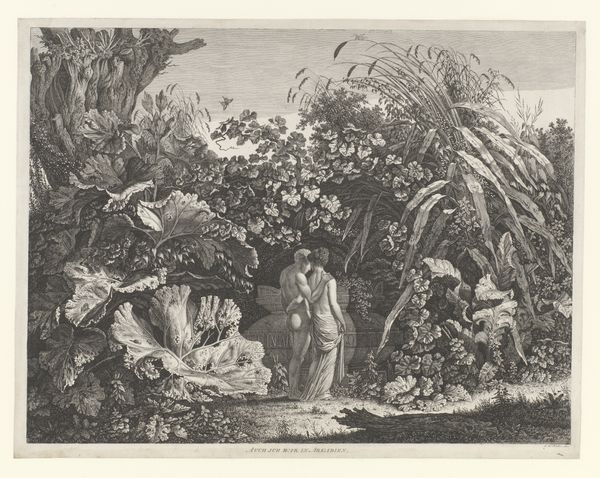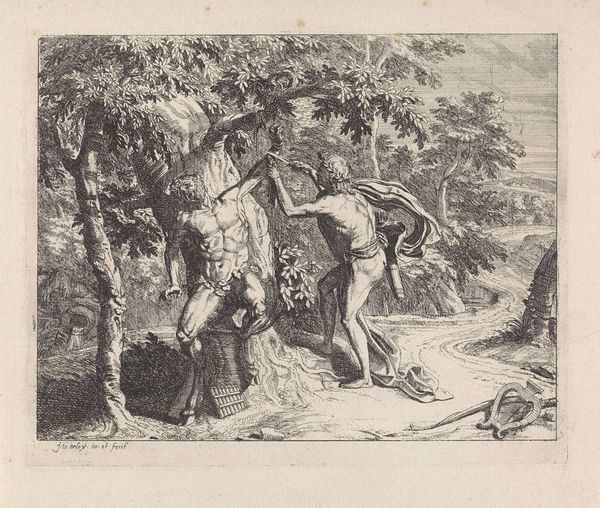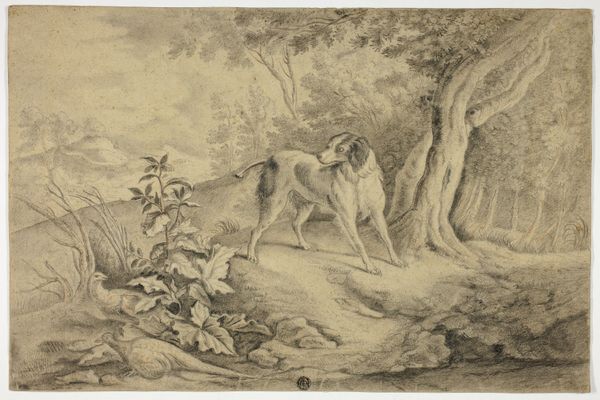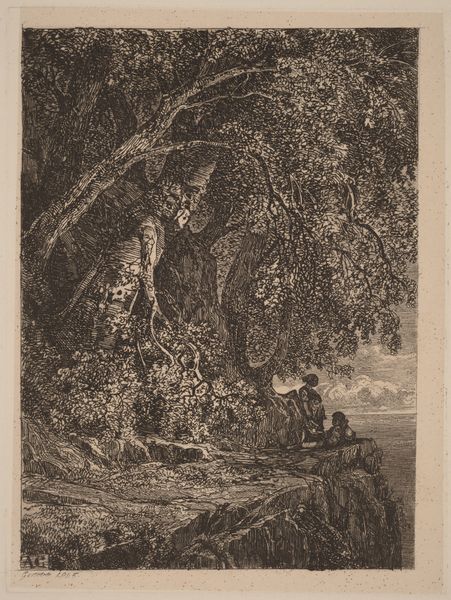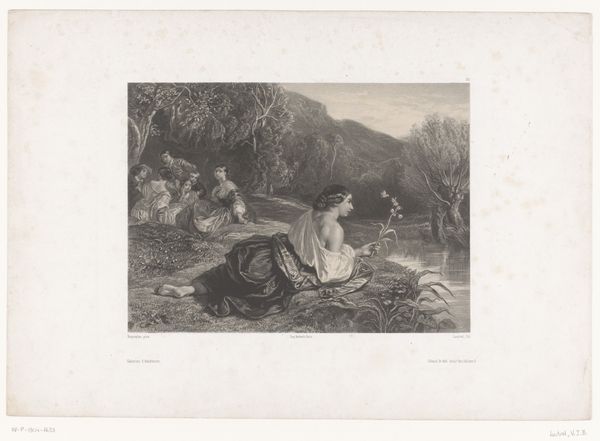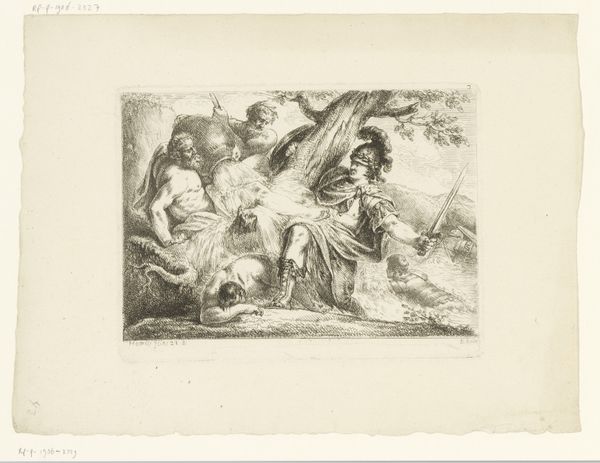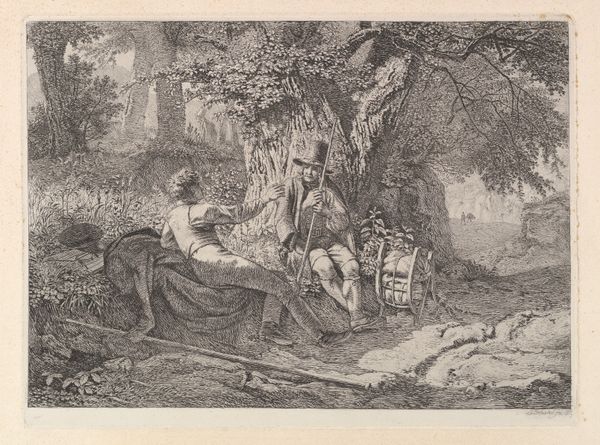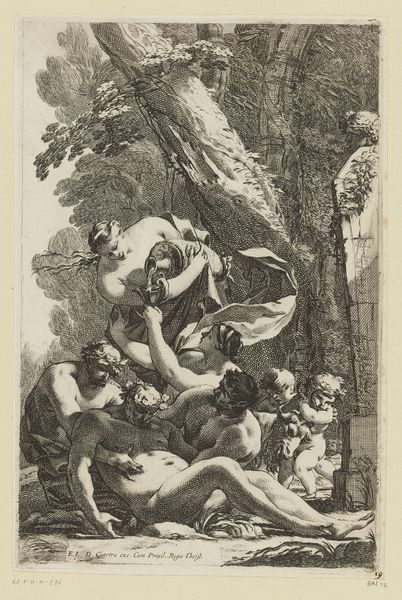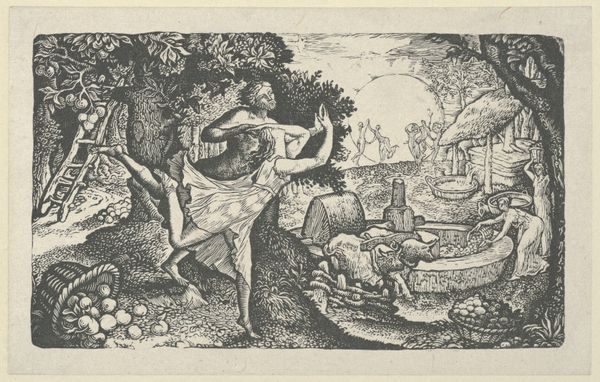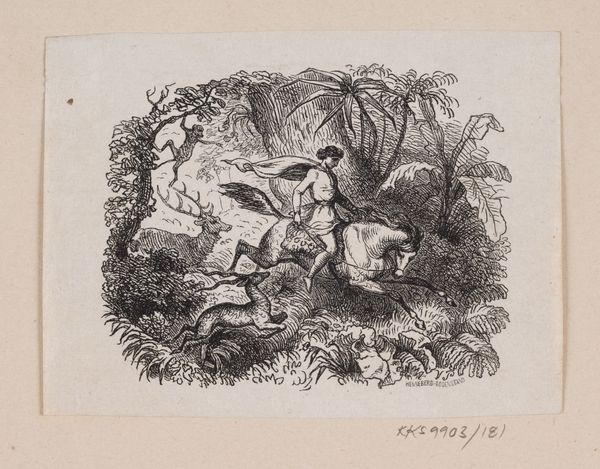
Diana en haar nimfen vinden de slapende Cupido in het bos 1792
0:00
0:00
print, etching
#
neoclacissism
#
allegory
# print
#
etching
#
landscape
#
history-painting
#
nude
Dimensions: height 324 mm, width 453 mm
Copyright: Rijks Museum: Open Domain
This print, made by Dominique Vivant Denon, invites us to consider the labor involved in image-making. Denon was not only an artist, but also a diplomat and administrator of the Louvre, so he understood the cultural power of images. This artwork was created using etching, a printmaking technique with a rich history tied to the rise of industrial capitalism. The process begins with a metal plate, usually copper, coated with a waxy ground. The artist then draws through the ground with a needle, exposing the metal. The plate is then submerged in acid, which bites into the exposed lines, creating grooves. Ink is applied to the plate, filling the etched lines, and the surface is wiped clean. Finally, the plate is pressed onto paper, transferring the ink and creating the print. Look closely, and you can see how the etched lines create a range of tones and textures, from the soft folds of fabric to the dense foliage of the forest. Each line represents a deliberate mark, a physical act of labor. The beauty of the final print belies the intensive work required to produce it. Denon's mastery of the etching process reflects the artistic skill and technical knowledge of the time. The value we place on this print is tied to the complex interplay of labor, materials, and artistic vision.
Comments
No comments
Be the first to comment and join the conversation on the ultimate creative platform.
